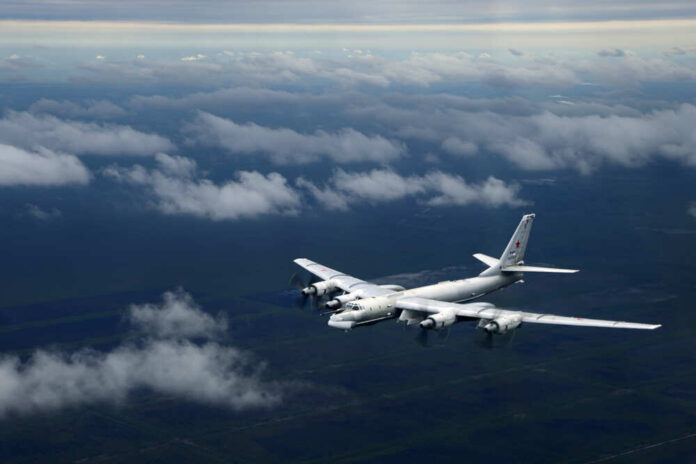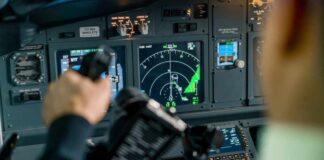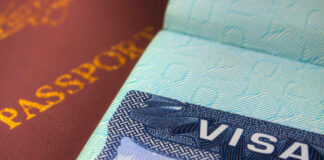
U.S. fighter jets intercepted four Russian planes near Alaska on Monday, according to the North American Aerospace Defense Command (NORAD). The four Russian aircraft were identified as TU-95 BEAR-H bombers and SU-35 fighter jets. NORAD sent five jets to escort the planes out of the Alaskan Air Defense Identification Zone, which is continuously monitored for potentially hostile actions.
NORAD detected, tracked and positively identified the Russian planes, which remained in international airspace, eventually declaring the interception was routine. The agency added that the event was not perceived as a threat or a provocative action.
NORAD conducts routine intercept of Russian aircraft entering Air Defense Identification Zone. pic.twitter.com/rJdML4Co1x
— North American Aerospace Defense Command (@NORADCommand) February 14, 2023
NORAD said its layered defense network used satellites, ground-based and airborne radars and fighter jets to track and identify aircraft.
The incident happened hours after Dutch fighter jets escorted three Russian military aircraft out of Poland’s NATO airspace. Interceptions of Russian aircraft in the area close to Russia’s far eastern border are relatively frequent. In October, US F-16 warplanes intercepted two Russian bombers in international airspace near Alaska.
In recent weeks, U.S. and Canadian airspace has seen rare offensive action, with the U.S. shooting down an alleged Chinese spy balloon and three unidentified flying objects. U.S. officials said intelligence officials had been tracking the spy balloon since it lifted off from the south coast of China. None of the objects shot down have been tied to China or any other country.
While the U.S. Department of Defense has stated that these are not necessarily extraterrestrial, there needs to be more clarity on the origin of these objects. The first object was shot down over Alaska by an F-22 Raptor fighter jet on February 10, followed by another cylindrical object over northern Canada the next day, which was taken down by a joint operation between the U.S. and Canada. The third and fourth objects were destroyed by U.S. fighter jets over Lake Huron in Michigan, with the latter shot down on February 12.
Significantly, these objects posed a potential risk to civilian aviation, flying at altitudes similar to those reached by commercial aircraft. The Chinese balloon incident from February 4 off South Carolina forced military officials, lawmakers, and the American public to start scrutinizing U.S. surveillance of its airspace more closely. Experts say that NORAD was previously focused on spotting fast-moving objects, not slow-moving balloons that may not appear well on the radar.
The U.S. has improved its ability to track these slow-moving objects by enhancing its radar, which partly explains the increased number of objects detected in the past week. In addition, the recovery of the shot-down objects will provide valuable intelligence to military and intelligence officials. However, experts believe that the U.S. should consider a sustainable policy to address these objects once more is known about the threat they pose.
The Biden White House has been largely quiet about the flying objects floating through U.S. airspace. However, National Security Council spokesman John Kirby said the White House had been as transparent as possible about the situation.





























